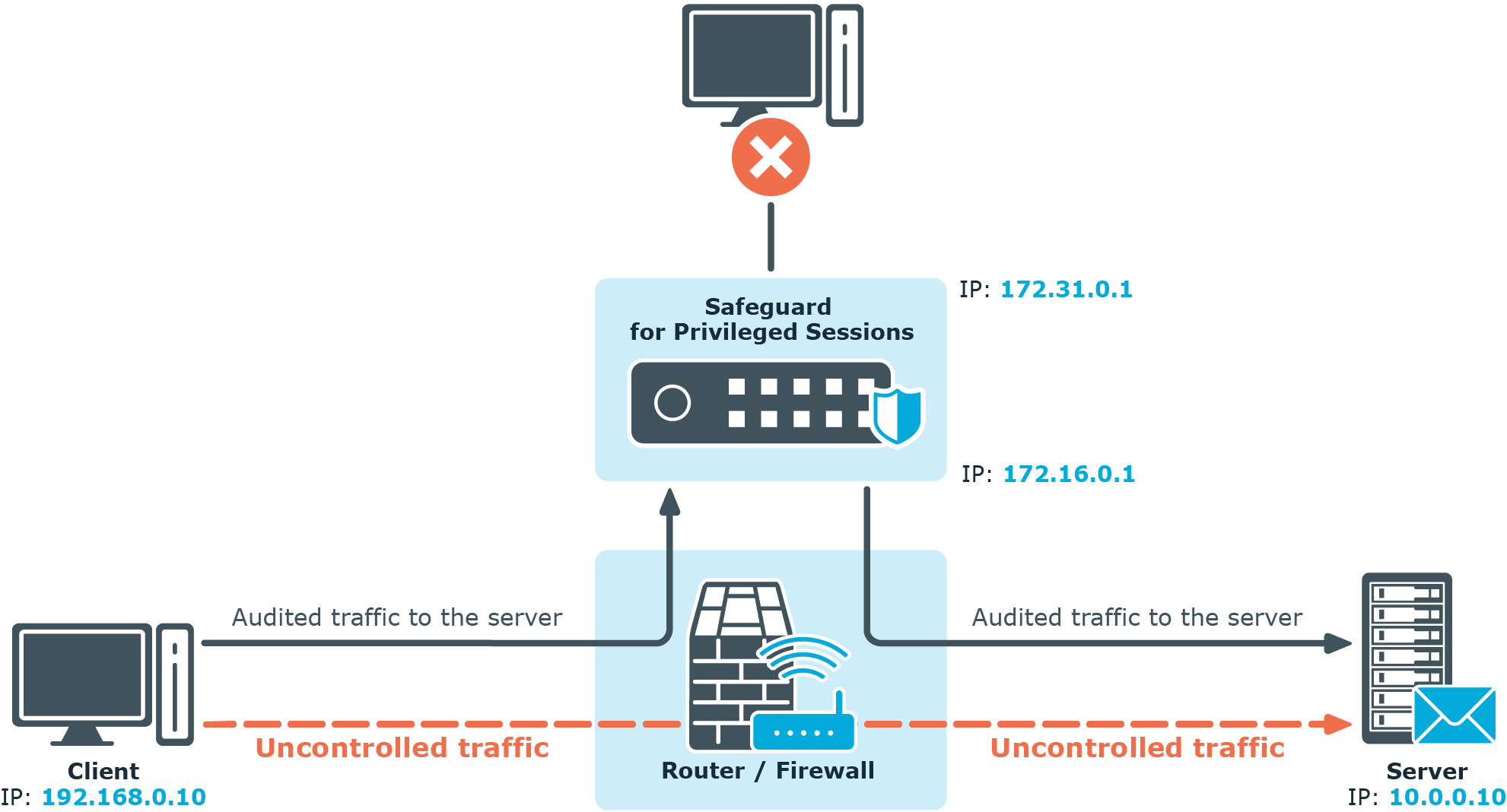Single-interface transparent mode is similar to transparent mode, but both client-side and server-side traffic use the same interface. An external device that actively redirects the audited traffic to One Identity Safeguard for Privileged Sessions (SPS) (typically, a firewall, a router, or a layer3 switch) is required . To accomplish this, the external device must support advanced routing (also called policy-based routing or PBR). For details on configuring an external device to work with SPS in single-interface transparent mode, see Configuring external devices.
Figure 9: SPS in single-interface transparent mode

Advantages
The advantages of using the single-interface transparent mode are:
-
Totally transparent for the clients, no need to modify their configuration.
-
The network topology is not changed.
-
Only the audited traffic is routed to SPS, production traffic is not.
Disadvantages
The disadvantages of using the single-interface transparent mode are:
-
SPS acts as a man-in-the-middle regarding the connection between the client and the target server. Instead of a single client-server connection, there are two separate connections: the first between the client and SPS, and a second between SPS and the server. Depending on how you configure SPS, the source IP in the SPS-server connection can be the IP address of SPS, or the IP address of the client. In the latter case — when operating in transparent mode (including single-interface transparent mode) — SPS performs IP spoofing. Consult the security policy of your organization to see if it permits IP spoofing on your network.
-
Traffic must be actively routed to SPS using an external device. Consequently, a network administrator can disable SPS by changing routing rules.
-
When adding a new port or subnet to the list of audited connections, the configuration of the external device must be modified as well.
-
A network administrator can (intentionally or unintentionally) easily disable monitoring of the servers, therefore additional measures have to be applied to detect such activities.
